These Wild Sculptures Actually Generate Green Energy
The winning designs of the LAGI 2016 competition range from giant sailboat sculptures that harvest fog to floating gardens that harness wave power
/https://tf-cmsv2-smithsonianmag-media.s3.amazonaws.com/filer/b1/15/b1157e78-733e-420c-9e0e-fa0bab601af4/cetacea-main.jpg)
The enormous sculpture looks, in the artist’s rendering, like the sails of a fleet of futuristic ships whose bodies have just sunk beneath the ocean's surface. Cool enough, just for its aesthetic power, but this piece of public art has another purpose: it harvests fog to create clean water.
Regatta H2O, as the sculpture is called, is the winner of a contest sponsored by The Land Art Generator Initiative (LAGI), an organization whose goal is to “accelerate the transition to post-carbon economies by providing models of renewable energy infrastructure that add value to public space, inspire, and educate.” Since 2010, they’ve been hosting a biannual contest for artists to create public art that’s beautiful and generates green energy. Previous years have seen the contest in places like Dubai and Copenhagen; this year’s was held in Santa Monica, California, a part of the world deeply affected by climate change-driven drought.
Elizabeth Monoian and Robert Ferry, LAGI’s founders, say Regatta H2O, from Tokyo-based designers Christopher Sjoberg and Ryo Saito, stood out above the pack for using the “specific contextual features” of its Santa Monica Bay site in its design.
“By addressing the challenge of water infrastructure and recognizing that water and energy are inextricably intertwined, especially in California, the proposal has the potential to serve as a beautiful and consistent reminder of water's importance to Santa Monica residents and visitors,” they say, in a statement written to Smithsonian. “The artwork is also ephemeral. It almost seems to disappear when the conditions are not right for fog harvesting. As a consequence, the artwork does not compete with the natural beauty of the bay and could be a welcome addition to such an historic and cherished landscape.”
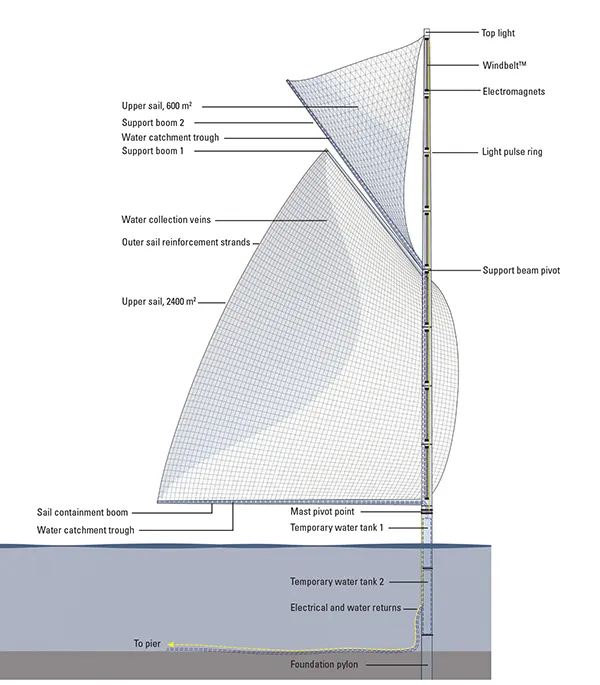
Regatta H2O’s sails are made of mesh, which is veined with troughs to collect fog and transport it to the masts, where it can be piped to storage containers on the shore. When there’s not enough moisture in the air to generate fog, the sails retract for an unobstructed view. The energy needed to operate the pumping and steering mechanisms is wind-generated. At night, extra energy lights up rings that serve as navigational safety markers.
"We sought a design that respects the unique qualities of the costal landscape and responds dynamically to the natural conditions of the site," Sjoberg says. "We felt the design should be light in its construction as well as visual appearance, and an anti-focal point, not distracting from the natural beauty of this place." .
Sjoberg and Saito, who both work as designers at a Tokyo architectural design firm, took home the top prize of $15,000.
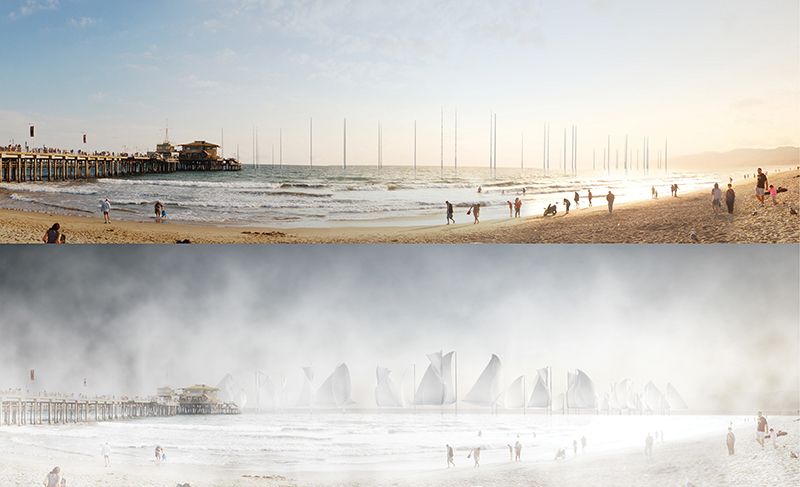
Regatta H2O is not the only wild design in the contest. The second place winner, “Cetacea,” from designers Keegan Oneal, Sean Link, Caitlin Vanhauer and Colin Poranski of Eugene, Oregon, is a series of arches rising from Santa Monica Bay that generates energy using wind, wave and solar power. It’s inspired by the blue whale (“cetacea” is the Latin name for whale), which uses micro-energy sources (krill, in their case) to fuel their enormous bodies. In the rendering, the white arches resemble the ribs of a huge sea creature emerging from the water.
The third place winner, “Paper Boats,” from Christopher Makrinos, Stephen Makrinos and Alexander Bishop of Pittsburgh, looks just like its name suggests: a fleet of enormous paper boats on the bay’s surface. The boats contain lenses and photovoltaic cells to harness sunlight, which can be directed to shore as energy while also generating a charge to encourage the growth of coral below.
Other projects include a giant passenger balloon covered with solar panels, which would both give tourists a sightseeing experience and send electricity back to the ground through its cable; an artificial garden of wave power-harnessing flowers; and a series of giant jellyfish-shaped sculptures that use wave power to heat water and harness condensation.
Monoian and Ferry hope the contest can engage the public with the idea of sustainable energy, in a way that doesn’t focus on the negativity and fear that often surrounds conversations about climate change.
“There is something wonderful about knowing that even some small part of the electricity that powers your life is being generated by a work of art that you can visit and enjoy,” they say. “And in this process of engaging people viscerally through art, we can help to build the political will to enact the swift and encompassing policy changes that we need to make sure we never experience the gloom and the doom of a 2-degree average global temperature increase.
/https://tf-cmsv2-smithsonianmag-media.s3.amazonaws.com/accounts/headshot/matchar.png)
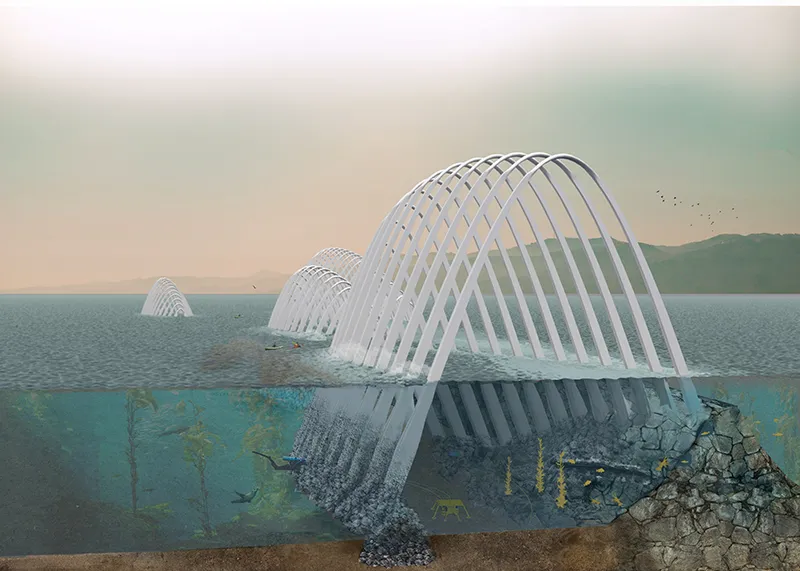
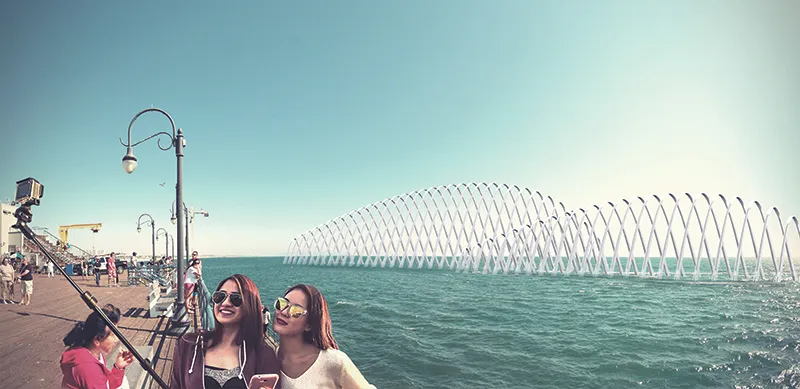
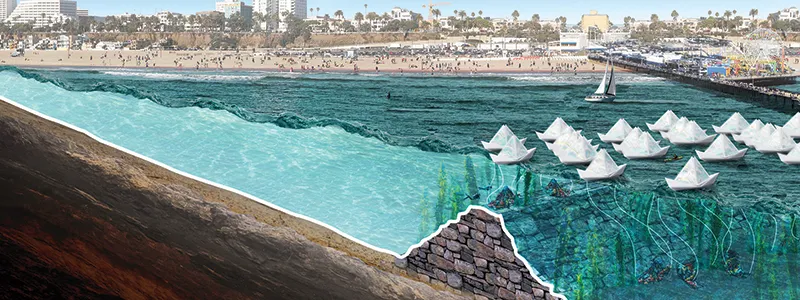
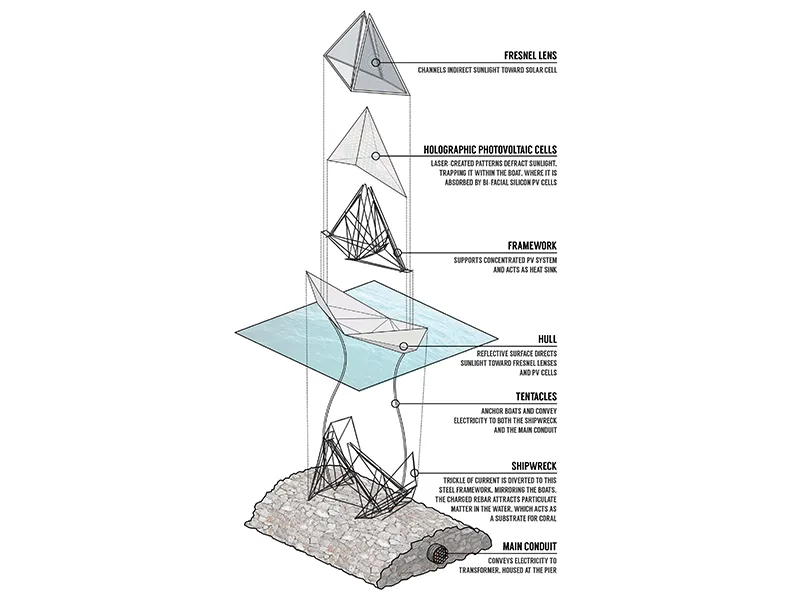
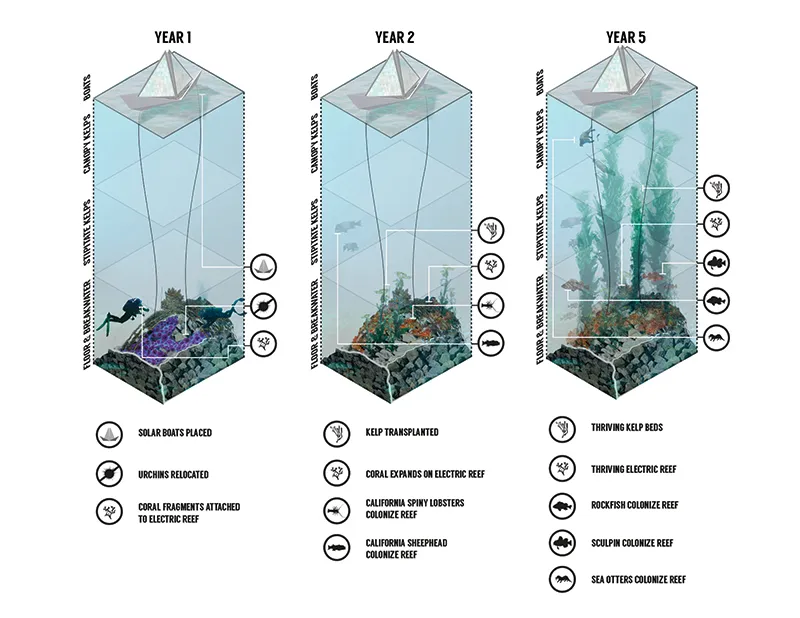
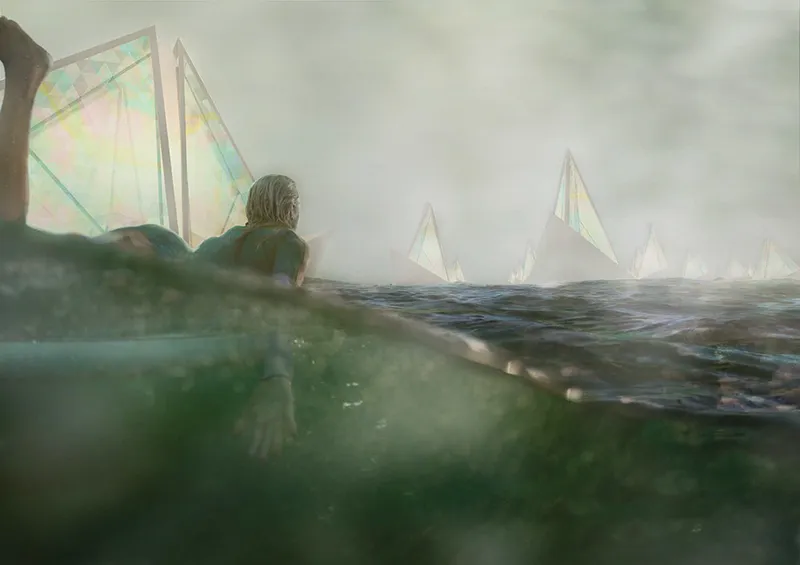
/https://tf-cmsv2-smithsonianmag-media.s3.amazonaws.com/accounts/headshot/matchar.png)